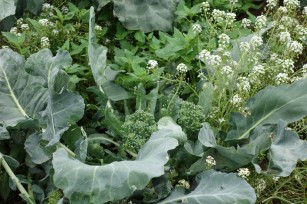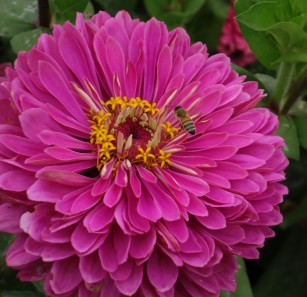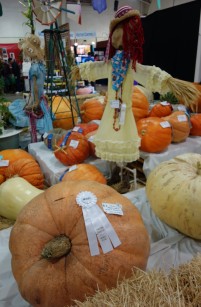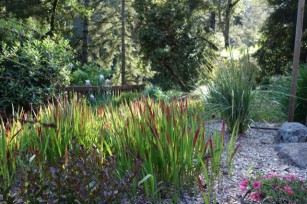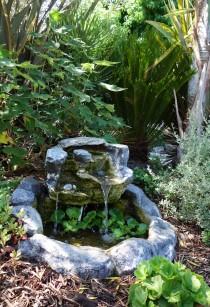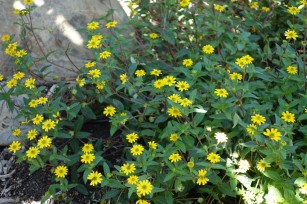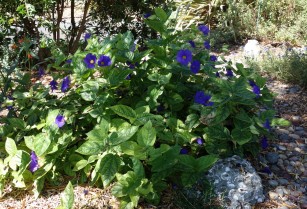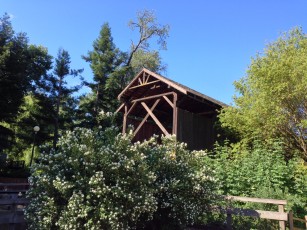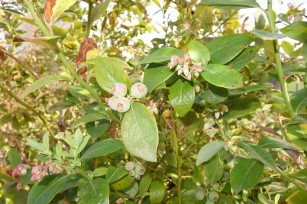 Prune orchards once reigned supreme in the Napa Valley. Pears, walnuts and fodder for grazing sheep were also grown where now 45,000 acres of premium wine grapes flourish. The crush is on in Napa County. Mostly cabernet sauvignon, chardonnay and merlot are being harvested at night but back in 1928 the prune crop was worth twice as much as wine grapes.
Prune orchards once reigned supreme in the Napa Valley. Pears, walnuts and fodder for grazing sheep were also grown where now 45,000 acres of premium wine grapes flourish. The crush is on in Napa County. Mostly cabernet sauvignon, chardonnay and merlot are being harvested at night but back in 1928 the prune crop was worth twice as much as wine grapes.
We all have an insect or two that we have to deal with in our gardens. I found out on a recent excursion to Napa Valley that all those acres of grape vines could possibly be lost if the European grape moth has its way. Believed to have been imported in vegetables from Europe it was first detected in Napa County in 2009. Back in 2011 Santa Cruz County was dealing with the same pest. With quarantine efforts and eradication of fruits and flowers near the area where they were first detected our county hasn't had much of a problem with them since.
Integrated pest management is the ecologically sound approach to pest control. In Napa County, I learned that the European grape moth is being well controlled in recent years by organic sprays such as spinosad and BT. Another very effective control method used is mating disruption with pheromones.
These techniques might not be as picturesque as planting roses around a grape orchard as an early 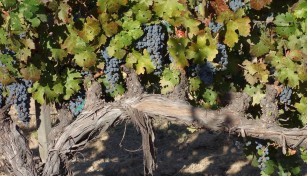 warning system for fungal diseases but they have worked for the grape moth. Roses are traditionally planted at the perimeter of vineyards as both they and grape vines are prone to powdery mildew and Downy mildew in our Mediterranean type climate. If powdery mildew appears on the roses, the vineyard can be sprayed with sulfur. Although sulfur does not cure powdery mildew, it will prevent it.
warning system for fungal diseases but they have worked for the grape moth. Roses are traditionally planted at the perimeter of vineyards as both they and grape vines are prone to powdery mildew and Downy mildew in our Mediterranean type climate. If powdery mildew appears on the roses, the vineyard can be sprayed with sulfur. Although sulfur does not cure powdery mildew, it will prevent it.
Downy mildew is another deadly mildew that attacks the green parts of the grape vine. Once Downy mildew is detected on the rose bushes, the grape vines can be immediately sprayed with a solution of copper sulphate and lime.
Many of the vineyards also plant lavender and rosemary to repel many harmful insects, provide habitat for beneficial insects preying on undesirable insects and add a pleasant flavor to the wine.
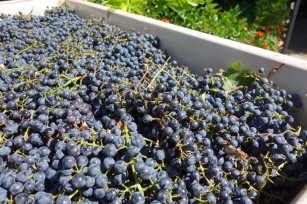 Sitting outside on a tasting room patio planted with beautiful flowering shrubs and perennials it's hard to imagine the delicious wine in your glass doesn't come effortlessly on the part of the winery. Like our area that grows pinot noir grapes exceptionally well, the terroir of the Napa valley is expressed in the flavor of its wine. The qualities of the soil, geography and climate all contribute.
Sitting outside on a tasting room patio planted with beautiful flowering shrubs and perennials it's hard to imagine the delicious wine in your glass doesn't come effortlessly on the part of the winery. Like our area that grows pinot noir grapes exceptionally well, the terroir of the Napa valley is expressed in the flavor of its wine. The qualities of the soil, geography and climate all contribute.
A vast array of soils of volcanic and marine origin coexist in Napa Valley. Half of the world's soil orders occur here with more than 100 soil variations all affecting the character of the grapes. Soils guide the grape grower as to which rootstock and grape varieties to plant. Valley floor soils tend to be deeper and more fertile and produce vigorous growth so the crop must be tightly managed to produce concentrated grapes. On the hillsides the vine has to struggle to survive the spare, rocky soils and naturally sets a smaller crop, producing smaller grapes of highly concentrated color and flavors.
Walking among the vines, I noted drip irrigation in use. I found out that traditionally Old World wine regions consider natural rainfall the only source of water that will still allow the vineyard to maintain its terroir characteristics. Spain has recently loosened the regulations of the European Union Wine Laws and France has been reviewing the issue.
Grapes depend on a certain amount of water mainly in the spring and summer and so here in California as well as other summer dry regions of the world like Australia, the vines are irrigated starting in May or June. It's a fine line to determine how much and how often to irrigate to preserve the flavor of the grape and not just grow lush plants with high yields.
In our own gardens we can train a plant to put down deep roots decreasing the amount of watering it needs. So it is in grape growing where the vine receives sufficient water during budding and flowering but irrigation is then scaled back during the ripening period so that the vine funnels more of its limited resources into developing grape clusters.
I enjoyed the gardens of the Napa Valley as much as the wine tasting. White Japanese anemone, pink sasanqua camellia and oakleaf hydrangea are all blooming. The dogwood trees are budded for next year's show and the Japanese maples are starting to color.
It's interesting to know that one grape vine produces about 4-6 bottles of wine per year and in 1968 the nation's first Agriculture Preserve was established to protect open space and prevent future over development.

